| Non-native Species | |
| Year-round Resident |
House Sparrows are a non-native species present at Monticello Park throughout the year.
Where to See Them in the Park
House Sparrows are usually on the ground or in low vegetation. They can be seen all over the park, and they frequently go into the stream to bathe and drink.
Physical Description
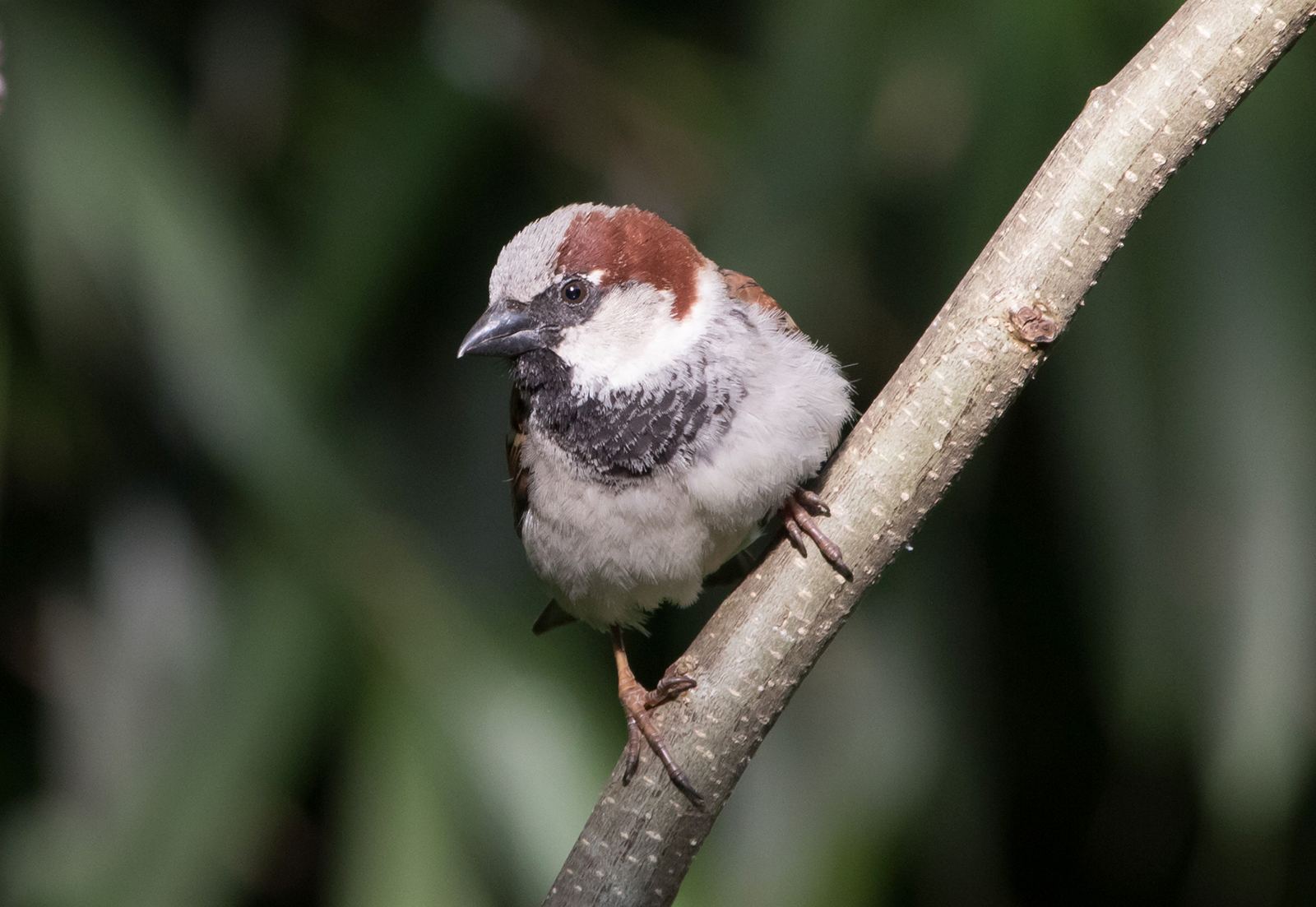
Male House Sparrows are sometimes jokingly called "Black-throated Browns". The male's plumage is distinctive, with a black throat and eyeline, a gray crown, and chestnut on each side of his head.
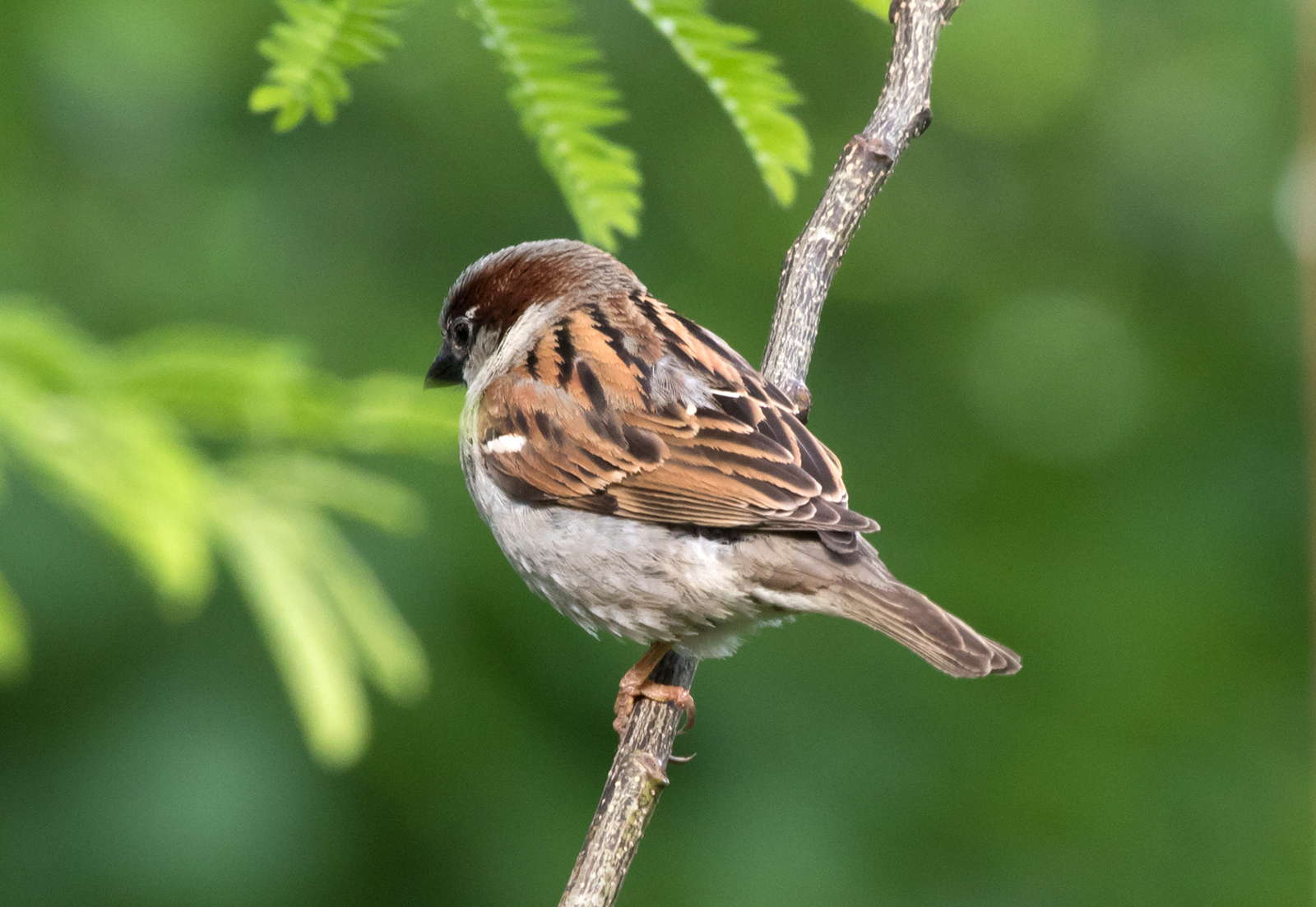
The back is rufous and black. A lot of House Sparrows are in the park, so knowing their plumage can be important.
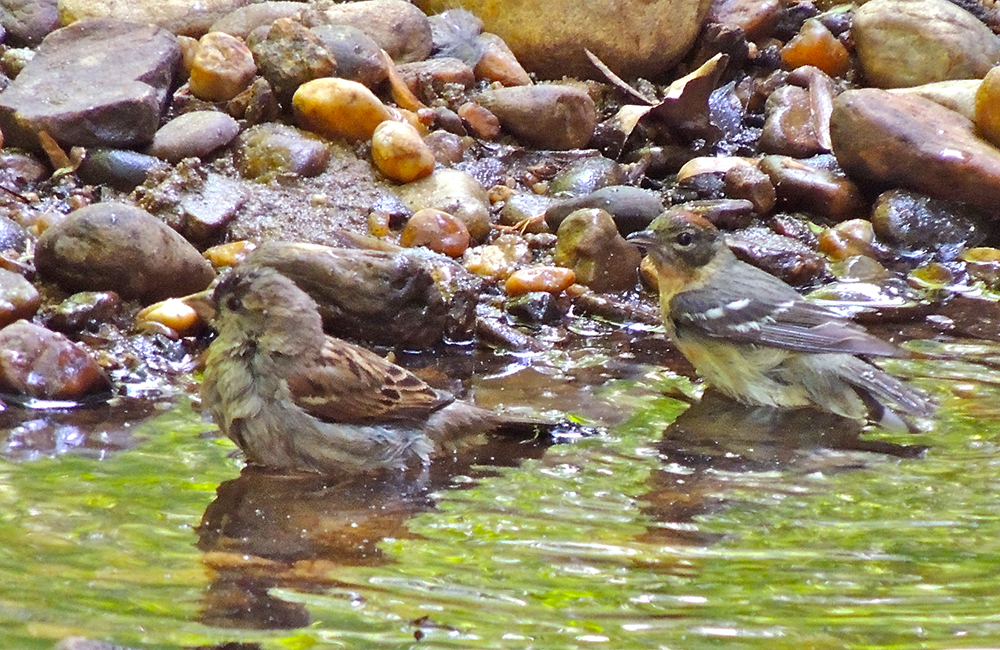
The wet House Sparrow to the left is slightly larger than the bathing Bay-breasted Warbler to the right. Wet and disordered feathers can be difficult to see clearly, and fluffed-out feathers can make the size of a bird difficult to determine.
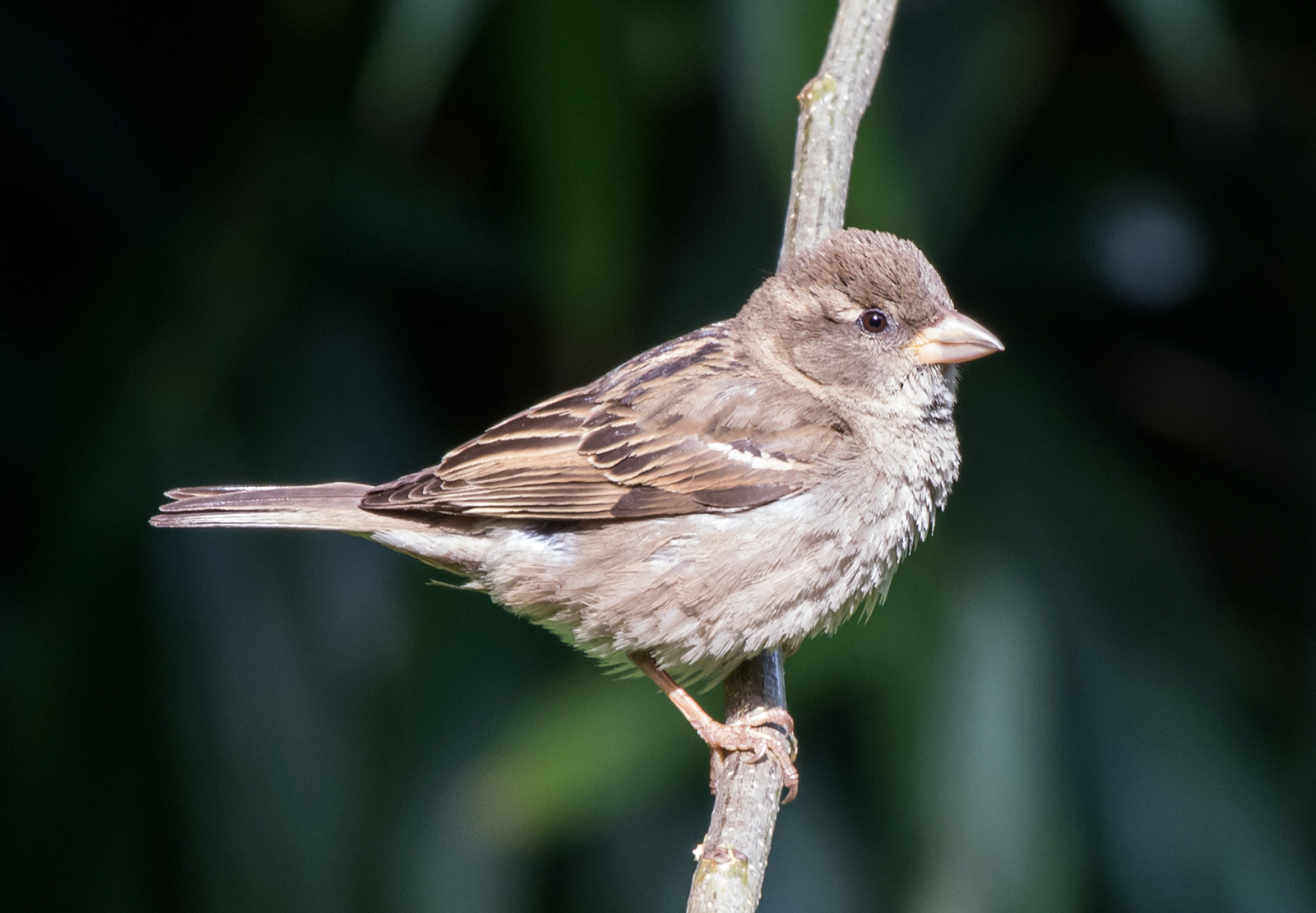
Female House Sparrows are LBJs (little brown jobs) who have no striking fieldmarks. One way to identify them is by process of elimination — mentally going through all of the sparrow species she cannot be.
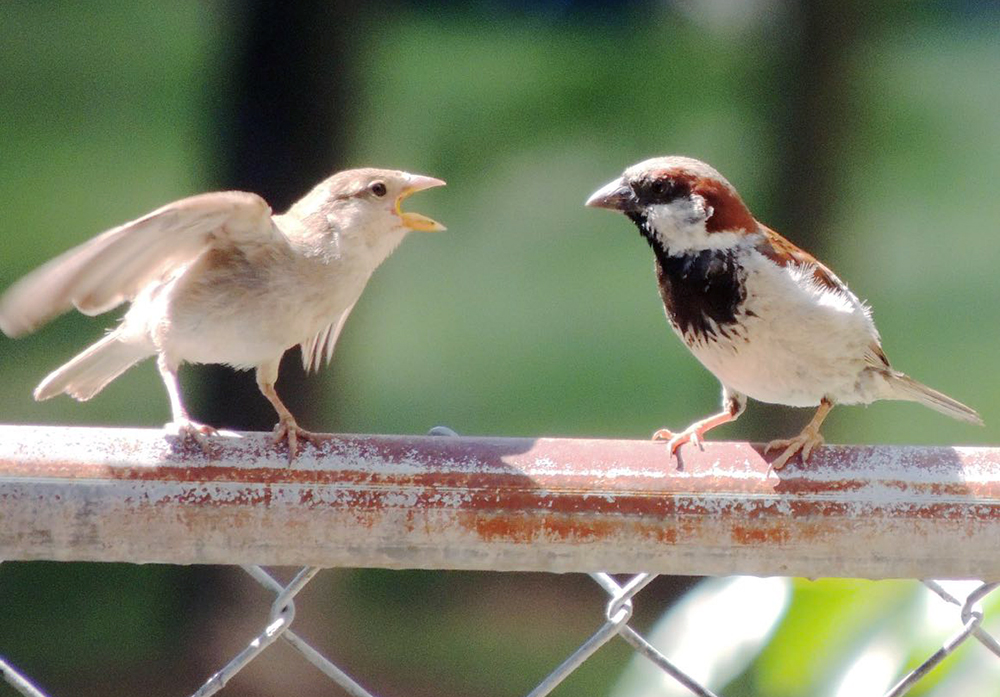
Young House Sparrows are even plainer than the females. Some have yellow flanges at the side of the bill. Flanges are the edges of the gape, and they provide a bright target at which the adults stuff food. The flanges eventually fall off as a young bird gets older. The adult males do much of the feeding at this stage, because the female may already have begun renesting.
Vocalizations
The song of the House Sparrow is a short chirp, often sung multiple times in succession. House Sparrows are quite vocal and often travel in small groups, which can generate a lot of chirping.
Hear the vocalizations of the House Sparrow.
Notes
House Sparrows are native to Eurasia and North Africa and are not related to the New World sparrows. They were introduced to the United States from England during the mid-1800s, which is why they are sometimes called English Sparrows. In England, the population of House Sparrows in urban areas has declined sharply. House Sparrows have had a seriously negative effect on American songbirds, especially species such as bluebirds. They have no trouble living in urban areas, and the major contact with bird life for many American city residents is restricted to House Sparrows and Rock Pigeons. Many House Sparrows also are found in rural areas. They are skilled opportunists, able to survive just as well on grain from agricultural fields as on food scraps from urban trash containers. Their numbers have declined somewhat in the US, but in 2015, the country still had more than 70 million of them.
Origin of Names
Common Names: House because they can live near human dwellings. Sparrow from the Anglo-Saxon spearwa, which means flutterer.
Genus Name: Passer means sparrow.
Species Name: Domesticus means house.
House Sparrow video footage
Return to the Index
